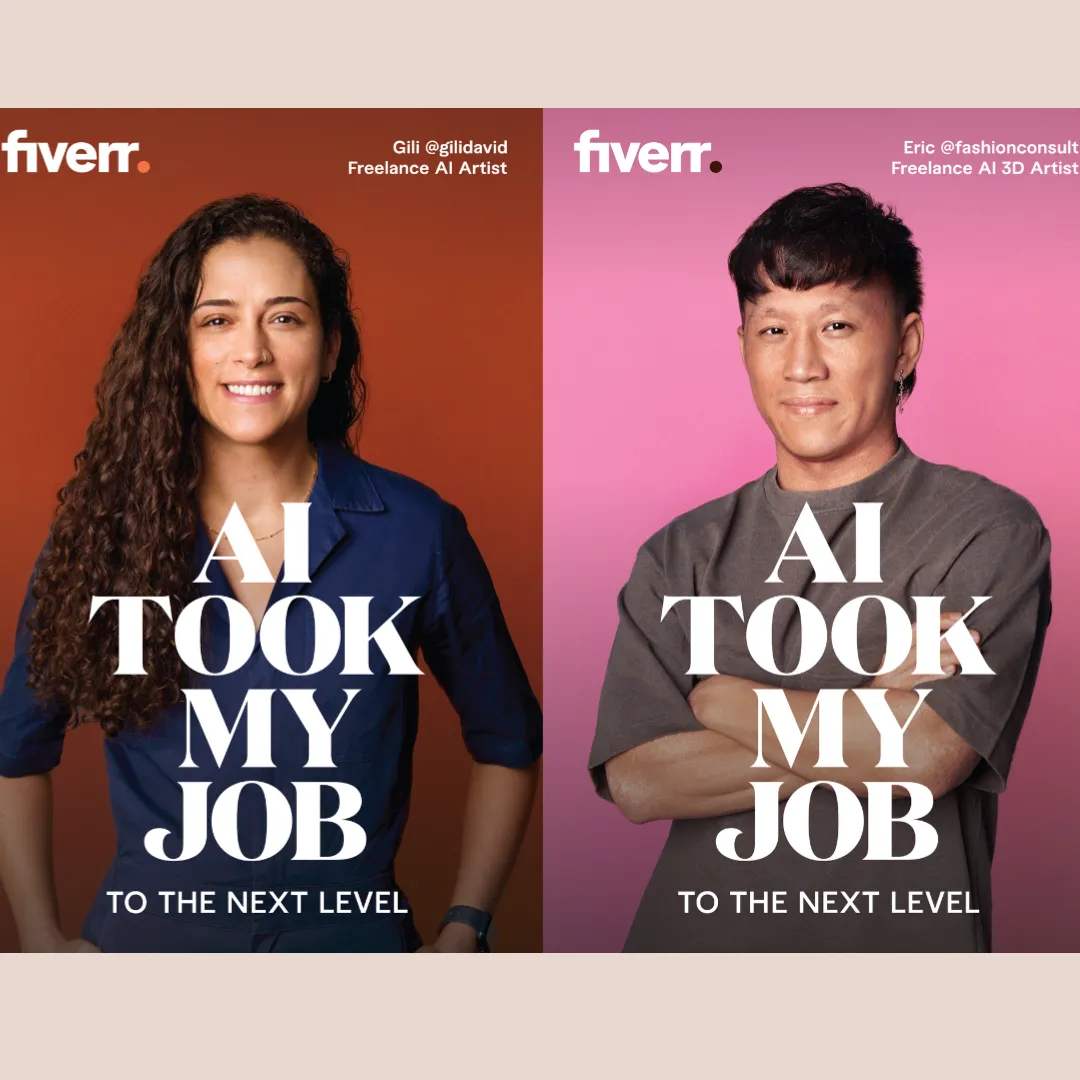Fiverr has been a game-changer in the freelance marketplace, connecting countless buyers with talented professionals across the globe. However, the platform isn't without its challenges and controversies. As we dig deeper, we'll explore the unique features of Fiverr, the issues faced by both freelancers and clients, and engage with the question that lingers in many minds: is Fiverr really messed up? Buckle up as we unpack this intriguing topic.
Understanding Fiverr: Overview of the Platform

Established in 2010, Fiverr has transformed the landscape of freelancing. With a simple premise—offering services starting at just five dollars—the platform has grown into a robust marketplace that caters to a wide array of services. Let's break down some of the key features and aspects that define Fiverr:
- Service Variety: The platform hosts gigs in categories like graphic design, writing, programming, marketing, video editing, and more. This diversity allows users to find or offer almost any service imaginable.
- Seller Levels: Fiverr employs a tiered system for sellers, including levels like New Seller, Level One, Level Two, and Top Rated Seller. Each level offers different benefits, creating an incentive for freelancers to improve their services and ratings.
- Gig Packages: Sellers can create multiple packages (Basic, Standard, Premium) for their services, allowing clients to choose from options that fit their budget and needs. This flexibility is a hallmark of the platform.
- User Reviews: Feedback plays a crucial role on Fiverr. Buyers can leave reviews and ratings based on their experience, which helps establish credibility for sellers and assists buyers in making informed decisions.
While Fiverr has democratized freelancing, it's essential to recognize the challenges that accompany its rapid growth. From quality control to platform fees, understanding these factors will help us address whether Fiverr's benefits outweigh its shortcomings.
Also Read This: Can I Raise My Fiverr Rate After Customer Demand Increases?
Common Issues Faced by Users

When it comes to using Fiverr, both freelancers and buyers often encounter a series of challenges that can leave them feeling frustrated. Here are some common issues that people face:
- Quality Control: One of the most significant concerns is the inconsistency in the quality of work delivered by freelancers. While some provide top-notch services, others may not meet expectations, leading to dissatisfaction.
- Communication Gaps: Effective communication is crucial for successful projects. However, language barriers and misinterpretations can lead to misunderstandings, impacting the final outcome.
- Time Zone Differences: Fiverr is an international platform, which means freelancers and buyers are often in different time zones. This can create delays in responses and hinder the flow of projects.
- Customer Support Issues: Many users report challenges in reaching satisfactory resolutions through Fiverr’s customer support. Delays in response times can leave users feeling stranded.
- Scam and Fake Profiles: Like any online marketplace, Fiverr is not immune to scams. Users often encounter fake profiles or freelancers who do not deliver on their promises.
- Fee Structure: The fees associated with using Fiverr can be confusing to some users. This includes both service fees for buyers and commission cuts for freelancers, which can affect pricing and profitability.
These issues can create a less-than-ideal experience for users on the platform. Understanding them is crucial as it serves as the foundation for improvement and a more positive experience in the future.
Also Read This: How to Link Your PayPal with Fiverr
The Impact of Recent Changes on Freelancers and Buyers
Fiverr has made several changes to its platform recently, and these modifications have left many users wondering how they impact their experiences. Let’s break down some of the most significant changes and their implications:
| Change | Impact on Freelancers | Impact on Buyers |
|---|---|---|
| Fee Structure Adjustments | Higher service fees can reduce earnings for freelancers, prompting them to increase their prices. | Buyers may feel the pinch of higher costs when ordering services, potentially leading to fewer purchases. |
| Algorithm Changes | Some gigs that were previously popular may now see a drop in visibility, creating uncertainty for freelancers. | Buyers may find it harder to discover new and quality services, affecting their options. |
| Enhanced Verification Procedures | Increased scrutiny on profiles might ensure better quality but could make it challenging for new freelancers to get started. | Buyers can experience more reliability in terms of quality service, but may also face longer wait times for new gigs. |
Overall, while Fiverr’s changes aim to enhance user experience, the adjustments can lead to a complex dynamic between freelancers and buyers. It’s essential for users to adapt and stay informed about these shifts."
Also Read This: Best 10 Fiverr Gigs for Interior Design in 2024
5. Comparisons with Other Freelance Platforms
When diving into the world of freelancing, Fiverr is often one of the first platforms that comes to mind. But how does it stack up against its competitors like Upwork, Freelancer, and Guru? Let’s explore some key comparisons:
- Service Models:
Fiverr operates on a gig-based model, which means freelancers offer fixed-price services. In contrast, Upwork often facilitates hourly work and long-term contracts, giving greater flexibility in terms of project scope.
- Fees:
Fiverr charges a standard fee of 20% on transactions, which can seem steep compared to Upwork's sliding scale of fees based on your lifetime earnings with a client. While Freelancer offers a subscription model for freelancers, it also imposes various fees that can be confusing.
- User Experience:
Fiverr’s interface is straightforward and user-friendly, especially for buyers. However, some freelancers find it limiting. Upwork, while more complex, offers more robust tools for managing projects and tracking time, which many freelancers appreciate.
- Job Variety:
Fiverr is well-known for creative gigs, but it might lack in other professional services. Platforms like Upwork tend to offer a broader range of job types, including tech, marketing, and writing, appealing to a wider audience.
Ultimately, the best platform depends on your specific needs as a freelancer or a buyer. Each platform has its unique strengths and weaknesses, so doing a little research can go a long way.
Also Read This: How to Start as a Freelance Interpreter
6. What the Community is Saying: User Experiences and Testimonials
The buzz around Fiverr isn’t all negative or positive; rather, it’s a mixed bag of reviews and experiences from various users. Let’s take a look at what the community has to say:
- Positive Experiences:
Many users appreciate Fiverr for its vast range of services. One freelancer noted, “I love how I can find gigs in almost any field. It’s a marketplace like no other!”
- Quality Concerns:
However, some users have reported challenges with quality control. A buyer stated, “I’ve had some great experiences, but I’ve also hired sellers who didn’t meet my expectations.”
- Communication Issues:
Clear communication can sometimes be a hurdle. One user shared, “It can be difficult to negotiate changes or discuss details, especially when working with sellers overseas.”
- Support Service:
Another recurring point is the customer service. “Getting timely help when something goes wrong is a challenge,” expressed one concerned user.
The testimonials and experiences highlight a complex picture of Fiverr’s community. While it offers convenient access to a variety of services, challenges remain that users hope will be addressed in the future. Listening to these voices can provide important insights into the platform's strengths and areas for improvement.
Also Read This: How to Get Your First Order on Fiverr: A Step-by-Step Guide
7. Strategies for Success on Fiverr
So, you want to make it on Fiverr? Great! While the platform has its challenges, there are definitely ways to carve out your niche and achieve success. Below are some handy strategies to help you stand out and thrive in the competitive landscape of Fiverr.
- Optimize Your Profile: Your profile is your first impression, so make it count! Use a professional profile picture, write a catchy bio that showcases your skills, and don’t forget to list your expertise. Highlight what makes you unique.
- Craft Compelling Gig Descriptions: Gig descriptions are your selling point. Make them engaging and clear. Include relevant keywords to boost your visibility in searches. Don’t shy away from sharing what clients can specifically expect when working with you.
- Utilize Visuals: A picture is worth a thousand words! Use high-quality images or videos to showcase your work. Consider creating a portfolio that reflects your best outputs to attract clients’ attention.
- Offer Competitive Pricing: When starting out, consider pricing your gigs competitively. As you build your reputation and gain reviews, you can gradually increase your rates. Don’t undervalue your work but stay mindful of market trends.
- Encourage Reviews: Positive reviews can dramatically enhance your credibility. Always encourage satisfied clients to leave feedback after a project. Remember, potential buyers often make decisions based on reviews, so cultivate that star power!
- Stay Active and Responsive: Active sellers are often favored by Fiverr’s algorithm! Respond promptly to inquiries, keep an eye on your messages, and be proactive in promoting your gigs through social media or other channels.
By implementing these strategies, you'll not only boost your chances of success on Fiverr but also create a more fulfilling freelance experience. Remember, persistence and adaptability are key!
8. Conclusion: Is There Hope for Improvement?
As we wrap up this exploration of Fiverr’s challenges, it's clear that the platform is a mixed bag. On one hand, it offers great opportunities for freelancers and businesses. On the other hand, issues like quality control, competition, and the constant push for lower prices create hurdles that can be tough to navigate.
So, is there hope for improvement? Absolutely! Here’s why:
- Sparked Conversations: The ongoing discussions about Fiverr's shortcomings and community suggestions for improvement push the platform to address its flaws. Customer feedback can be a powerful tool for any organization.
- Innovation and Adaptation: Fiverr has shown a willingness to innovate. They’ve updated features, introduced new tools, and created programs to assist sellers. This adaptability hints that they are invested in their users.
- Focus on Quality: Recent trends towards higher quality gigs mean there's a growing demand for skilled professionals. This shift may encourage Fiverr to reassess how they vet offers and sellers.
- Community Building: Fiverr is already taking steps to strengthen its community through forums, education, and mentorship. Enhancing community support can lead to better experiences for users at all levels.
In conclusion, while there are certainly challenges to overcome, the potential for improvement on Fiverr is promising. If the platform continues to listen to its users and adapt, it could thrive into a community that benefits both freelancers and clients alike. Let’s hope for a brighter future on Fiverr!



